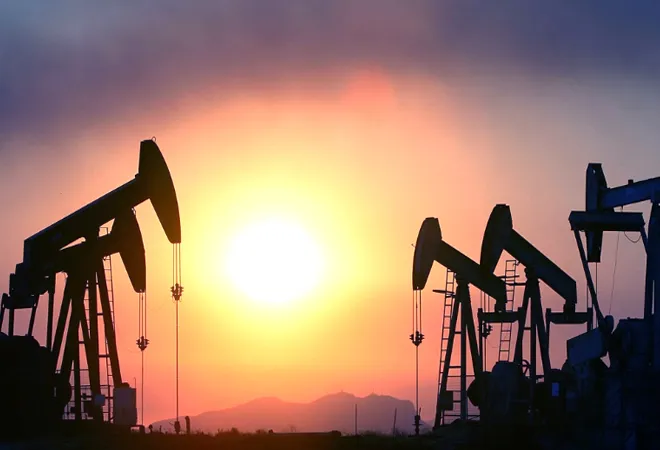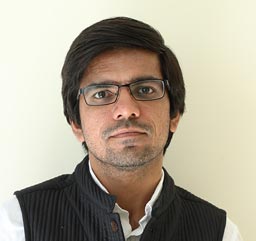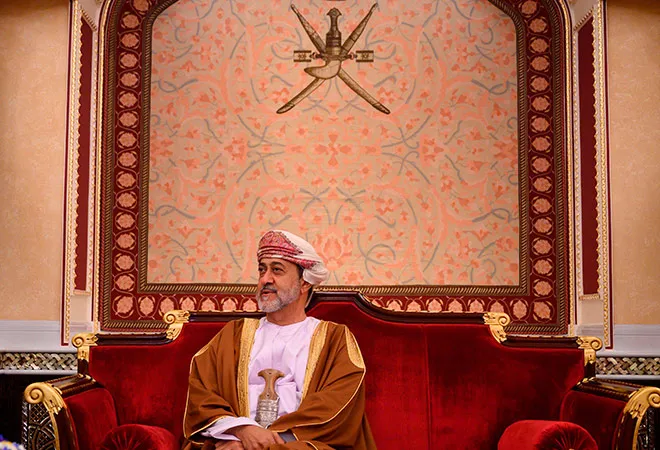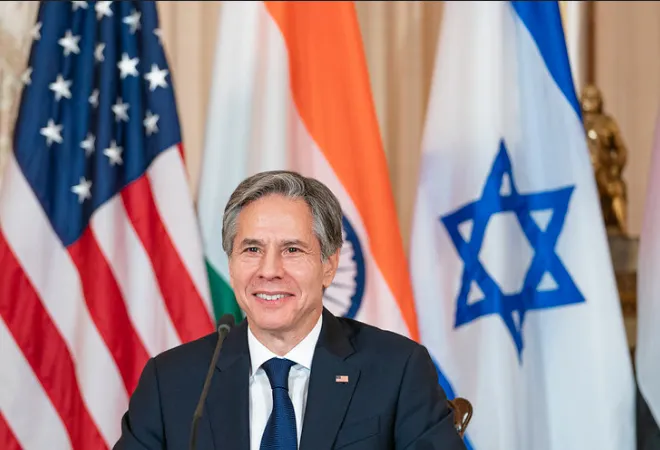One of the initial inflection points between New Delhi and the Western capitals since the start of the Ukraine Crisis was a wish for India to take a few steps back with regard to its relations with Moscow. While there were no calls for India to sever ties, New Delhi’s decision to take advantage and purchase cheap Russian oil available in the market made headlines as many in the Western media accused India of indirectly aiding Russia. The noise was loud enough that India had to counter these narratives, including Foreign Minister Dr S Jaishankar visiting European capitals to highlight that India’s reliance on oil imports for energy security and a fragile economic base gave little room to have the luxury of deciding on which oil supply was moral and which was not. Eventually, India’s position started to settle into international discourse more successfully. The jump in Indian oil imports from Russia was, indeed significant, considering Moscow has never been a traditional supplier for New Delhi. On year-on-year numbers, India’s imports of oil from Russia between April and November 2022 increased by a whopping 768 percent.
To the criticism, India highlighted that with its population having an average of US$2,000 per capita income compared to an average of 60,000 euros (in Europe and overall in the West), there was no room available to shun its pragmaticism. While India’s concerns are not just legitimate, but critical to maintain more than 6 percent GDP growth over the next decades, New Delhi a few years ago did cede political and economic interests in exchange for a broader geopolitical consensus being built against Iran and its alleged nuclear weapons programme. The then administration of President Barack Obama exerted pressure on India to close the taps of Iranian oil coming into India as the P5+1 group of countries (including Russia and China) negotiated a deal with Tehran through a month’s long process hosted in Austria.
The Iran and JCPOA era
Iran, for a long period of time, was consistently one of India’s top-three oil suppliers. Energy was the bedrock of India-Iran economic ties for decades, to the point that critical infrastructure such as the Mangalore refinery (MRPL) was largely built keeping in mind supplies of the kind of ‘heavy crude’ that came from Iran. At this time, MRPL started to look at alternatives but also hoped for consistent sanction waivers from the United States (US) which would allow it and others in a similar boat to import Iranian crude. “It’s not easy to replace Iranian barrels,” the managing director of the refinery had said. Beyond imports, India’s ONGC Videsh (OVL) also discovered the Farzad B gas field in Iran’s Fars province as part of an exploration deal it signed in 2002.
For New Delhi, letting go of Iranian crude supplies was a difficult transition as it moved to other suppliers such as Saudi Arabia, Iraq, and as far as Nigeria and Angola to spread its energy import risk.
The run up to the signing of the Joint Comprehensive Plan of Action or the JCPOA (also known as the Iran nuclear deal) in 2015 was underpinned by euphoria of Tehran’s return to mainstream international trade and economics after decades of sanctions following the 1979 revolution, only to be upended by the US unceremoniously and unilaterally exiting the agreement in 2018 under the ire of the then US President Donald Trump. However, New Delhi and Tehran tried to maintain the oil trade, employing a variety of strategies, including India submitting its payments to a bank account in Kolkata which after a while amounted to over US$4 billion, and accessing these funds only became more difficult for Iran as pressure mounted during that time to push Tehran to sign on an agreement. By 2015, avenues to pay Iran for oil had become next to non-existent for a country like India, a signatory to many financial treaties as part of international law and transparency efforts. For Iran, the petro-dollars coming from Asian economies were critical, and Tehran also exerted pressure on the likes of India to find newer ways to transfer payments including (failed) ideas of opening Iranian bank branches in Mumbai (one of the last avenues was using a bank in Turkiye, however, that route also eventually shut down due to sanctions). Other, more translucent methods of transferring funds were also suggested such as routing transfers through a third country in the region, while talks of an Iran-India under-sea pipeline pitched by some companies also did not make much headway. For New Delhi, letting go of Iranian crude supplies was a difficult transition as it moved to other suppliers such as Saudi Arabia, Iraq, and as far as Nigeria and Angola to spread its energy import risk. However, India saw benefit in the JCPOA, allowing New Delhi to be seen in a positive light by the US for its role in pushing the fruits of such an agreement in Tehran, while also overall not being in favour of a potentially destabilising nuclear arms race being launched in the Middle East where more than 7 million of its citizens lived and worked, more than US$30 billion in remittances came from, and a large part of energy security resided.
Why Russia is different
Contrary to India’s experience with Iran and the period of JCPOA negotiations, the case with the Ukraine conflict is different on multiple fronts. To begin with, Russia is a big country, and one with which India has had historical ties specifically in the realm of defence cooperation. While India has not imported much from Russia, it has invested significantly in Russian energy. India’s first-ever international investment in energy was in Russia’s Sakhalin-I fields in the country’s far east. In 2009, OVL also bought Russia-focused Imperial Energy, spending over INR 10,000 crores on the purchase. Most of these investments remain, with New Delhi intending to continue and perhaps even expand its presence there. However, this time, both the situation and geopolitical realities are much different to those with Iran a few years ago. India’s military preparedness as of today, specifically considering a much more heightened threat from China following the 2020 border clashes, requires close cooperation with Moscow to maintain a high level of preparedness.
While it is palpable that New Delhi’s geopolitical calculations are today much more aligned with the West, particularly the US, and its military imports recently have favoured Western equipment along with a push to manufacture domestically, the immediate armoury of Indian forces remains overwhelmingly from Soviet and Russian constructs alike. Their upkeep, already challenging with Russia’s military industrial complex taking a hit, is critical to India’s immediate security requirements. Furthermore, on issues such as nuclear submarines and other such equipment, Russia remains the only country offering that level of technologies to New Delhi as of today. Beyond Russia’s larger global presence and India’s ties with Moscow, a review of how well actually international isolation or sanctions work is increasingly contested. Initially, an argument could have been made that sanctions did push Iran to join the negotiations that eventually led to the JCPOA, however, this as an example cannot be institutionalised as a blueprint. Iran was much smaller, eager to return to the mainstream and comparatively less involved with the West. While its nuclear programme was a big area of concern, regional apprehensions by Arab states such as Saudi Arabia, the UAE, and Israel pulled in a sense of urgency in the West to address a developing security problem. The Russian crisis, by association of Moscow’s role and presence in global geopolitics, energy, and business ties with the West prior to the conflict and its growing strategic ties with China is of a different scale that is not constricted to a geographic boundary. It has impacted international inflation, food security, energy security, affecting developing states in the Global South equally, if not more than the others. While there is a level of grave concern over Russian actions, specifically when it comes to the question of sovereignty, many countries in Asia, Middle East, and Africa, not directly part of the conflict, have prioritised protection of their own economies and populations over partaking in a broader narrative leading into big power politics of the future.
Conclusion
India’s pragmaticism such as buying oil from Russia is not new. During the First Gulf War, again for energy security and the safety of Indians working in the region, India’s then Foreign Minister Inder Kumar Gujral visited Iraqi dictator Saddam Hussein in Baghdad and ended up in an embrace with the Iraqi leader who had just invaded Kuwait. But all this led to the largest evacuation of civilians from a conflict zone and a level of safety for the transit of critical oil supplies from the region. Much like Indian officials remembered Saddam for trying to help India in building a case against Pakistan-sponsored terrorism in the 1990s, Indians today also remember Russia’s help in the post-independence conflicts such as the 1971 war. However, any isolation of Russia as of today will be determined by Russian actions and its own decisions.
In a new era where New Delhi is positioning itself as a ‘pole’ in a multipolar order, and a “voice” for the Global South’s interests at forums such as the G20 along with a tacit acceptance of what the future global order will look and the space for hedging against Western partners and their interests will become much smaller compared to what it has been historically.
Ultimately, for a long period of time, India has managed to operate with its national interests at the forefront while avoiding taking sides or joining groupings or alliances. However, in a new era where New Delhi is positioning itself as a ‘pole’ in a multipolar order, and a “voice” for the Global South’s interests at forums such as the G20 along with a tacit acceptance of what the future global order will look like (specifically from a US–China great power rivalry perspective), the space for hedging against Western partners and their interests will become much smaller compared to what it has been historically. And experiences, ranging from Iran and the JCPOA to Russia and Ukraine will heavily feed into the next stage of India’s foreign policy decision-making.
____________________________________________________________________________________________________________________________
Kabir Taneja is a Fellow at the Observer Research Foundation.












